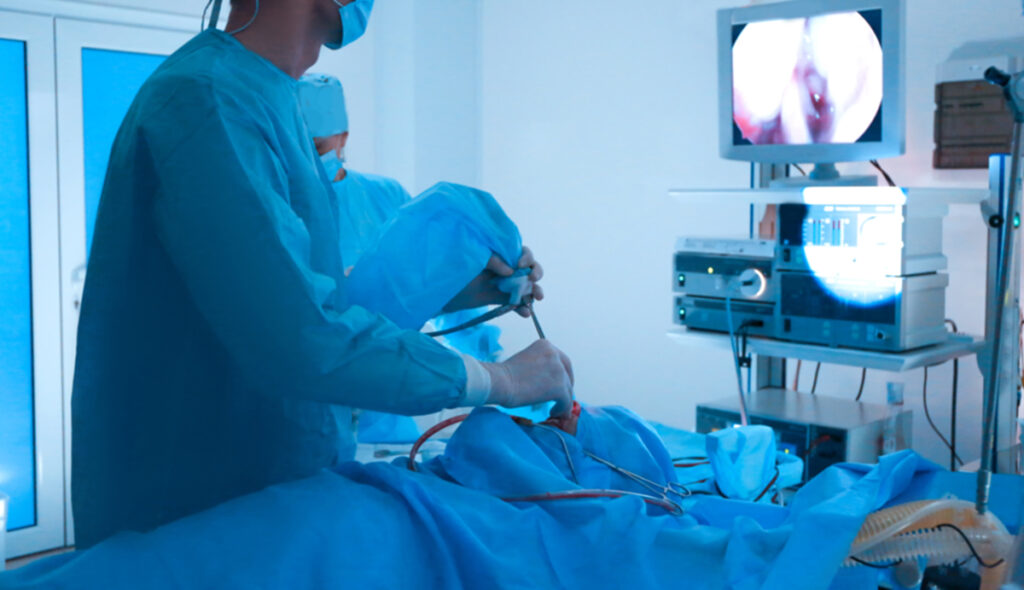Sphenoidotomy is vital for many reasons. It is utilized to remove infected tissue, access and excise tumors, and decongest sphenoid sinuses. If you’re considering this procedure, here are the seven signs that indicate you need one.
What Is a Sphenoidotomy?
A sphenoidotomy is a surgical procedure aimed at enlarging the opening of the sphenoid sinus. It can involve the surgical removal of infected tissue. It can also vary in approach based on the patient’s specific medical condition.
7 Signs You May Need Sphenoidetomy
1. Conservative Treatment is Not Effective to Your Vasomotor Rhinitis
Vasomotor rhinitis is characterized by inflammation of nasal passages due to non-allergens like smoking, the cold, stress, or air pollution. If medicine has little to no effect on your vasomotor rhinitis, your healthcare provider may recommend endonasal vivian neurectomy.
Endonasal vivian neurectomy is a surgical procedure to numb the nerve that triggers vasomotor rhinitis. Sphenoidotomy is often incorporated into this procedure to alleviate rhinitis symptoms effectively.
2. Conservative Treatment is Not Effective to Your Sphenoid Rhinosinusitis
Sphenoid rhinosinusitis is the inflammation of the sphenoid sinuses and nasal lining.
Rhinosinusitis is inflammation of the sinuses and the lining inside your nose. If traditional remedies like medication and saline irrigation prove ineffective in alleviating symptoms, your healthcare provider may suggest sphenoidotomy. Through sphenoidotomy, your sinus surgeon can remove infected tissue and improve nasal airflow.
3. There is a Mass or Lesion in Your Sphenoid Sinus
Discovering a mass or lesion within the sphenoid sinus can indicate a tumor, which can cause various symptoms.
A growth in the sphenoid sinus can cause long-term or chronic nose congestion, making breathing or smelling difficult. The tumor can also cause pus or blood to drip from the nose. Additionally, the tumor’s presence may exert pressure on nearby nerves, resulting in sensations of numbness or pain in the face, teeth, or ears.
Sphenoidotomy offers a solution to address these issues. It allows your healthcare provider to remove the lesions effectively, relieving your sphenoid sinuses from the associated symptoms and restoring their function.
4. You’re Having Vision Problems
Did you know that approximately 90% of sphenoid sinuses contact the ipsilateral optic nerve, while 10% contact both nerves?
Congestion within the sphenoid sinus can exert pressure on the optic nerve, resulting in blindness, loss of color vision, and pain.
Expanding the opening of the sphenoid sinus through sphenoidotomy facilitates drainage of congestion, thereby alleviating pressure on the optic nerve and improving vision.
5. You Have a Sphenoid Cerebrospinal Fluid Leak
Sphenoid cerebrospinal fluid (CSF) leaks can be congenital, traumatic, tumor-related, or idiopathic.
Approximately 26% of non-traumatic CFL leaks occur with defects in the sphenoid sinus.
For traumatic CSF leaks, 29% result in meningitis in the long term when not surgically repaired.
In such cases, a sphenoidotomy is essential to access and repair the leak, preventing further complications.
6. You Have Pituitary Tumors
The pituitary gland is at the brain’s base above the nasal cavity. Large pituitary tumors can press on the pituitary gland, brain, and nerves, causing headaches, vision problems, and even seizures.
For a non-invasive surgical removal of these pituitary tumors, sphenoidotomy is crucial.
7. You Have Tumors on the Base of Your Skull
Skull-based tumors can impact the cranial nerves responsible for sensory and motor functions, including sight, taste, smell, hearing, and facial muscle control. When these tumors impinge on cranial nerves, they may lead to blindness, hearing loss, and an altered sense of taste and smell.
Located at the bottom of the skull, these tumors can be addressed through endonasal skull-based surgery via the nasal passage. Accessing these tumors necessitates the opening of the sphenoid sinus through a sphenoidotomy, allowing the surgeon to remove the tumors and restore normal function effectively.
What to Do Next: Finding a Sinus Specialist
Sphenoidotomy is typically recommended when conservative treatments yield inadequate results or when symptoms, such as vision impairment, escalate.
In some instances, sphenoidotomy is incorporated into broader surgical interventions to access specific regions within the body.
If you exhibit any of the signs mentioned above, consulting a sinus specialist or surgeon is essential. At Puget Sound Sinus Center, you’ll find a dedicated sinus specialist with extensive experience in successful surgeries. Dr. Amy Anstead is the only sinus specialist globally to complete a second Integrative Medicine fellowship. She offers evidence-based and holistic care for sinus and skull base conditions. Take the first step toward relief by scheduling an appointment with us today.


